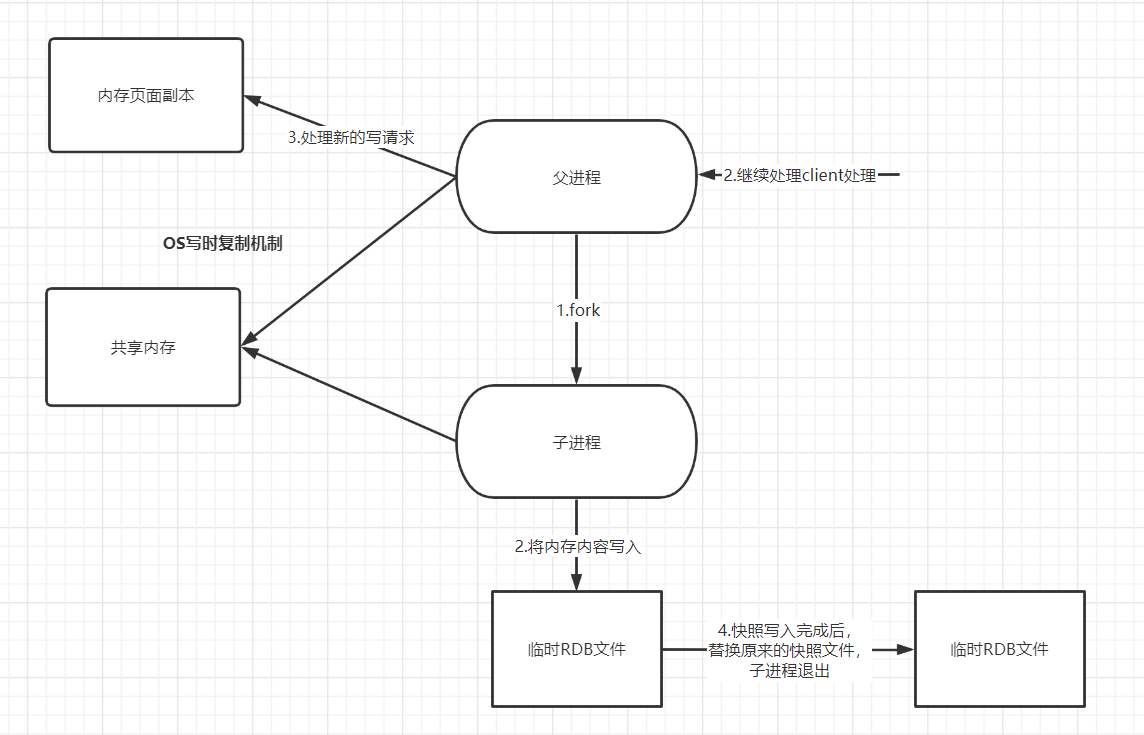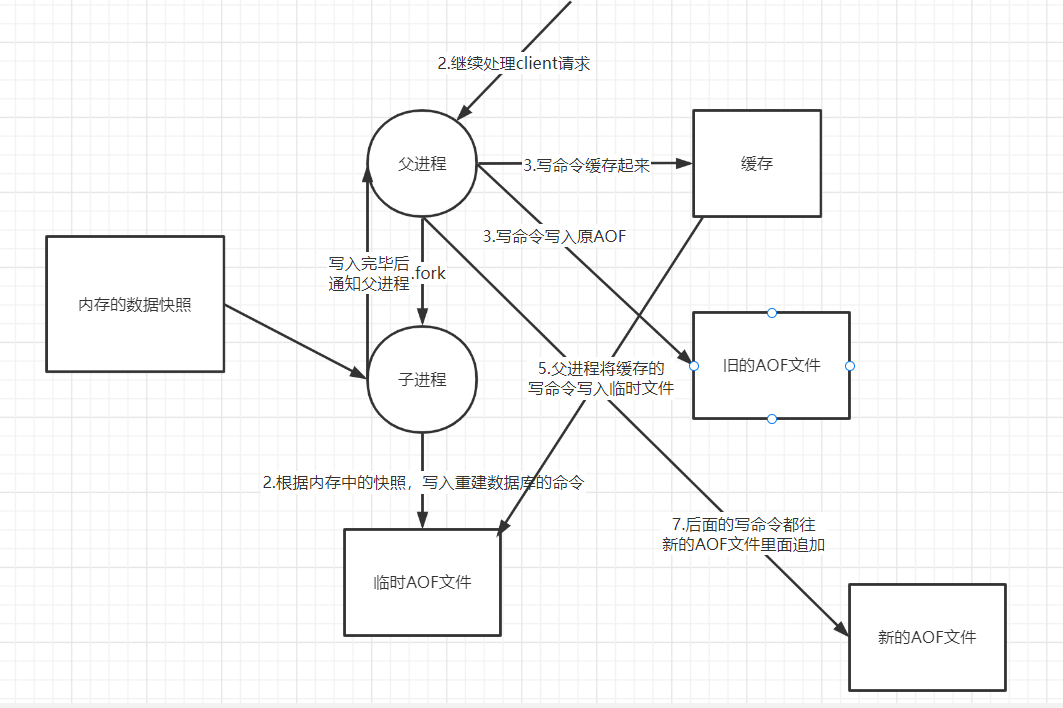配置文件redis.conf
基础配置
下面为常用的配置
1 | # Redis configuration file example. |
配置RDB(Redis DataBase)持久化
Redis是内存性数据库,如果不讲内存中的数据保存到磁盘中,那么一旦服务器退出,服务器中的服务器状态也就消失了,所以需要学会Redis中的持久化操作

在指定的时间间隔内将内存中的数据集快照写入磁盘,也就是Snapshot快照,它恢复时是将快照文件直接读取到内存里。
Redis会单独创建(fork)一个子进程来进行持久化,会先将数据写入到一个临时文件中,待持久化过程都结束了,再用这个临时文
件替换上次持久化好的文件。整个过程中,主进程是不进行任何IO操作的。这就确保了极高的性能。如果需要进行大规模数据的恢
复,且对于数据恢复的完整性不是非常敏感,那RDB方式要比AOF方式更加的高效。
RDB的优点是效率高,对于数据的完整性要求不高
RDB的缺点是最后一次持久化后的数据可能丢失。
rdb文件默认保存为dump.rdb
1 | ################################ SNAPSHOTTING ################################ |
配置AOF(Append Only File)文件
以日志的形式来记录每个写操作,将Redis执行过的所有指令记录下来(读操作不记录),只许追加文件但不可以改写文件,redis
启动之初会读取该文件重新构建数据,换言之,redis重启的话就根据日志文件的内容将写指令从前到后执行一次以完成数据的恢复
工作

1 | ############################## APPEND ONLY MODE ############################### |
如果aof中被恶意篡改了,这时候redis是启动不起来的,这时候可以使用redis提供的一个工具redis-check-aof.exe
优点:每一次修改都同步,文件的完整性会更好,
缺点:该文件远远大于rdb,修复速度远远慢于rdb,运行效率比rdb低
小结:
RDB 持久化方式能够在指定的时间间隔内对你的数据进行快照存储
AOF 持久化方式记录每次对服务器写的操作,当服务器重启的时候会重新执行这些命令来恢复原始的数据,AOF命令以Redis 协
自加保存每次写的操作到文件未尾,Redis还能对AOF文件进行后台重写,使得AOF文件的体积不至于过大。只做缓存,如果你只希望你的数据在服务器运行的时候存在,你也可以不使用任何持久化
同时开启两种持久化方式
- 在这种情况下,当redis重启的时候会优先载入AOF文件来恢复原始的数据,因为在通常情况下AOF文件保存的数据集要比RDB
文件保存的数据集要完整。 - RDB 的数据不实时,同时使用两者时服务器重启也只会找AOF文件,那要不要只使用AOF呢?作者建议不要,因为RDB更适合
用于备份数据库(AOF在不断变化不好备份),快速重启,而且不会有AOF可能潜在的Bug,留着作为一个万一的手段。
- 性能建议
- 因为RDB文件只用作后备用途,建议只在Slave上持久化RDB文件,而且只要15分钟备份一次就够了,只保留 save 900 1这条规则。
- 如果Enable AOF,好处是在最恶劣情况下也只会丢失不超过两秒数据,启动脚本较简单只load自己的AOF文件就可以了
- 代价一是带来了持续的IO
- 代价二是AOF rewrite 的最后将 rewrite 过程中产生的新数据写到新文件造成的阻塞几乎是不可避免的。只要硬盘许可,应该尽量减少AOF rewrite 的频率,AOF重写的基础大小默认值64M太小了,可以设到5G以上,默认超过原大小100%大小重写可以改到适当的数值。
- 如果不Enable AOF,仅靠Master-Slave Repllcation(主从复制)实现高可用性也可以,能省掉一大笔IO,也减少了rewrite时带来的系统波动。代价是如果Master/Slave 同时断电,会丢失十几分钟的数据,启动脚本也要比较两个Master/Slave中的RDB文件,载入较新的那个。

